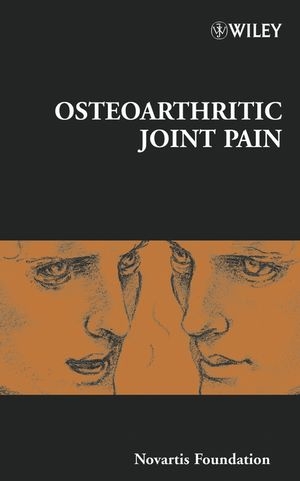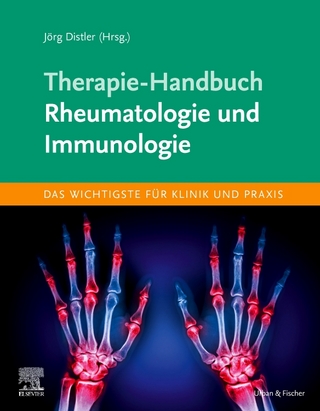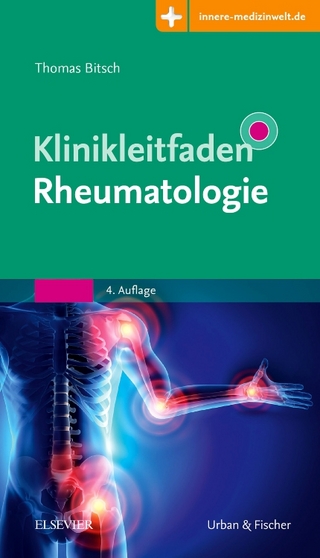
Osteoarthritic Joint Pain
John Wiley & Sons Inc (Verlag)
978-0-470-86761-7 (ISBN)
- Titel z.Zt. nicht lieferbar
- Versandkostenfrei innerhalb Deutschlands
- Auch auf Rechnung
- Verfügbarkeit in der Filiale vor Ort prüfen
- Artikel merken
Osteoarthritis is a chronic degenerative disease associated with joint pain and loss of joint function. It has an estimated incidence of 4 out of every 100 people and significantly reduces the quality of life in affected individuals. The major symptoms are chronic pain, swelling and stiffness; severe, chronic joint pain is often the central factor that causes patients to seek medical attention. Within the affected joint, there is focal degradation and remodelling of articular cartilage, new bone formation (osteophytes) and mild synovitis. Several mechanisms are thought to contribute to osteoarthritic joint pain. These include mild synovial inflammation, bone oedema, ligament stretching, osteophyte formation and cartilage-derived mediators. Changes in joint biomechanics and muscle strength also influence the severity and duration of joint pain in osteoarthritis. Within the nervous system, the relative contributions of peripheral afferent nociceptive fibres and central mechanisms remain to be defined, and there is limited information on the phenotype of sensory neurons in the OA joint. Importantly, there is no relation between clinical severity, as measured by radiographic changes, and the presence and severity of joint pain. Patients with severe joint pain may have normal joint architecture as determined by X-ray, whereas patients with considerable evidence of joint remodelling may not have significant joint pain. Treatments for osteoarthritic joint pain include non-steroidal anti-inflammatory compounds, exercise, corrective shoes and surgical intervention. There remains a critical need for improved control of joint pain in osteoarthritis.
This book brings together contributions from key investigators in the area of osteoarthritic joint pain. It covers the clinical presentation of joint pain, the pathways involved in joint pain, osteoarthritis disease processes and pain, experimental models and pain control. The discussions provide insights into the nature of osteoarthritic joint pain, identify key studies needed to advance understanding of the problem, highlight possible intervention points and indicate future pathways towards a better treatment of osteoarthritic joint pain.
Derek J. Chadwick and Jamie A. Goode are editors for Osteoarthritic Joint Pain and other scientific titles.
Chair's Introduction (D. Felson). Spinal mechanisms contributing to joint pain (H. Schaible).
Activation of sensory neurons in the arthritic joint (B. Grubb).
Neuromuscular aspects of osteoarthritis: a perspective (K. Brandt).
Current perspectives on the clinical presentation of joint pain in human osteoarthritis (P. Creamer).
Joint mechanics in osteoarthritis (W. Herzog, et al.).
General discussion I Developing animal models of RA.
Characterization of joint pain in human osteoarthritis (G. Ordeberg).
The role of inflammatory mediators on nociception and pain in arthritis (B. Kidd, et al.).
Molecular events of chronic pain: from neurone to whole animal in an animal model of osteoarthritis (J. Henry).
Phantoms of rheumatology (C. McCabe, et al.).
Bone pain and pressure in osteoarthritic joints (P. Simkin).
Structural associations of osteoarthritis pain: lessons from magnetic resonance imaging (P. Conaghan & D. Felson).
The role of TRP channels in sensory neurons (M. Koltenberg)
Mechanisms that generate and maintain bone cancer pain (P. Mantyh & S. Hunt).
Symmetry, T cells and neurogenic arthritis (N. Shenker, et al.).
Lessons from fibromyalgia: abnormal pain sensitivity in knee ostheoarthritis (L. Bradley, et al.).
Chair's summing up (D. Felson).
Index of contributors.
Subject index.
| Erscheint lt. Verlag | 7.5.2004 |
|---|---|
| Reihe/Serie | Novartis Foundation Symposium ; No.260 |
| Verlagsort | New York |
| Sprache | englisch |
| Maße | 152 x 229 mm |
| Gewicht | 595 g |
| Themenwelt | Medizinische Fachgebiete ► Innere Medizin ► Rheumatologie |
| Naturwissenschaften ► Biologie | |
| ISBN-10 | 0-470-86761-2 / 0470867612 |
| ISBN-13 | 978-0-470-86761-7 / 9780470867617 |
| Zustand | Neuware |
| Haben Sie eine Frage zum Produkt? |
aus dem Bereich


